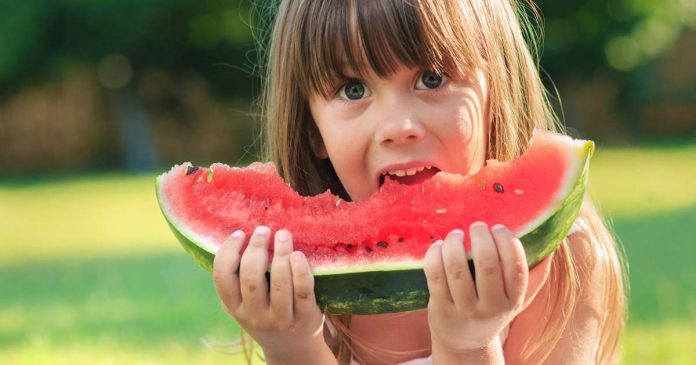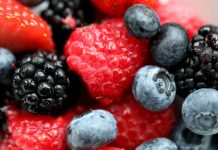The Eatwell Plate has been given a bit of a revamp in recent years.
It was first launched by the Department of Health in the early 90s to help people understand their set of recommendations on what a healthy and balanced diet looks like.
Back then, it was known as the Eatwell Plate, but following a relaunch is 2016, is now known as The Eatwell Guide.1
Aside from the name change, the plate itself has also been given some tweaks here and there to provide further clarity on those food and drink recommendations and reflect changes in eating habits.
In this article, one of our nutritionists, Amrit Kaur Khaneja, explains all about the Eatwell Plate, including what you should eat, what you shouldn’t eat, why it’s been created (and updated) and more…
As for how it’s changed over the years since the healthy plate was relaunched.
The guidance has been reviewed and refined in places in a bid to make it even easier for people to decide which food and drink they should ideally put in their bodies on a daily basis.
As a result, the Eatwell Guide now excludes all high fat, salt and sugar foods, such as chocolate, crisps and sugary drinks, from the main plate image.
The new version also includes hydration advice, which includes recommending people drink 6 to 8 cups/glasses of fluid a day and limit their fruit juice and smoothie intake.
The new guidance also includes the average calories per day that men and women should be aiming for.
(Note – while serving up food and drink that fits within the Eat Well recommendations every single meal-time is ideal, it’s not compulsory.)
The proportions are aimed at giving you a steer on what you should eat over a period of a day or even a week.3
What is the purpose of the Eat Well Plate?
It’s designed to explain the proportion of the food we should consume from each food group to achieve a healthy balanced diet.
The guidance is consistent with the Government’s guidelines for adults and children over the age of 5.
It was first introduced as a model (the UK’s national food guide, the Balance of Good Health) to help define Government advice on what a healthy balanced diet looks like.
What does the Eatwell Plate contain?
It’s made up of 5 sections, one for each food group.
The largest food groups are ‘fruit and vegetables’ (green section) and ‘potatoes, bread, rice, pasta and other starchy carbohydrates’ (yellow section).
The new guide also focuses on incorporating high fibre foods into our diet and includes images of brown pasta and bread with wholegrain cereal.
The older version didn’t contain this level of detail, instead, it included all types of carbohydrate-containing foods, such as white pasta and cornflakes.
The next section, which has been re-named ‘beans, pulses, fish, eggs, meat and other protein’ has increased in size from 33% to 40%.
It consists of a much wider variety of protein-rich food, with less emphasis on meat as the main protein source.
Meanwhile, the blue section contains guidance in relation to dairy food and focuses more on choosing lower fat and lower sugar options.
It also includes dairy-free alternatives too, such as soya milk. This section has been reduced from 15% to 7%.
The purple section, which makes up just 1% of the healthy plate has been streamlined to contain just unsaturated oils, low fat oils and spreads due to the fact that fats are high in calories and therefore should be consumed in moderation.
Who can use the Eatwell Plate?
It’s something we can all use to make sure we’re eating the right quota of ‘good’ and ‘bad’ food more regularly than not.
You can be happy with your weight or want to lose some weight, eat meat or follow a vegan or other diet and still use the Eatwell Guide.
It can also be followed by people from all ethnic origins too.4
However, if you happen to be following a special diet or are taking certain medication that may be impacted by your diet, then it’s best you speak to a dietician about how you can safely adapt the Eatwell Guide in line with your specific needs.
While the Eatwell Plate can be used by all adults, it doesn’t apply to children under the age of 2.
This is due to the fact they have different nutritional needs from adults.
Meanwhile, children over the age of 2 and up to 5 should gradually move to eat the same food as the rest of their family, as set out in the Eatwell Guide.
How do you make a Eat Well Plate?
This is what a healthy plate of food looks like, according to the Eatwell Guide:
What is the pink section on the Eat Well Plate?
The pink section used to be called ‘meat, fish, eggs, beans and other non-dairy sources of protein’ and has been renamed ‘beans, pulses, fish, eggs, meat and other proteins.’
This change has been implemented to help encourage us to increase our intake of beans and pulses and eat two portions of fish (one of which must be oily) and less processed meat and red meat.
Over the past few years, there has been a shift in eating patterns where alternative free-from foods are much more available in supermarkets and other stores.
For instance, lactose-free milk, oat milk, and other dairy, egg, gluten-free and meat-free alternatives.
What if you’re vegetarian, vegan or pescatarian?
The good news is you can still plan your meals in line with the Eat Well Guide’s recommendations and your dietary requirements.
What’s more, the new Eatwell Guide is more vegan/vegetarian-friendly than the previous version.
For example, as we’ve just mentioned, the pink section was previously named ‘meat, fish, eggs and beans’ and is now called ‘beans, pulses, fish, eggs, meat and other proteins’, shifting the focus away from meat being the main focus.
The blue section, which is now called ‘dairy and alternatives’ (previously milk and dairy foods) also takes vegan and vegetarian diets into consideration.
If you are on a veggie diet, you can adapt the plate to exclude any animal meat and replace them with meat free and plant-based meat alternatives, such as tofu, soya or tempeh.
A pescatarian plate works in a similar way, but includes fish options instead.
Due to the fact vegans don’t consume any animal-derived products – such as meat, fish, eggs, dairy and honey – their healthy plate would be based around plant-based alternatives.






























